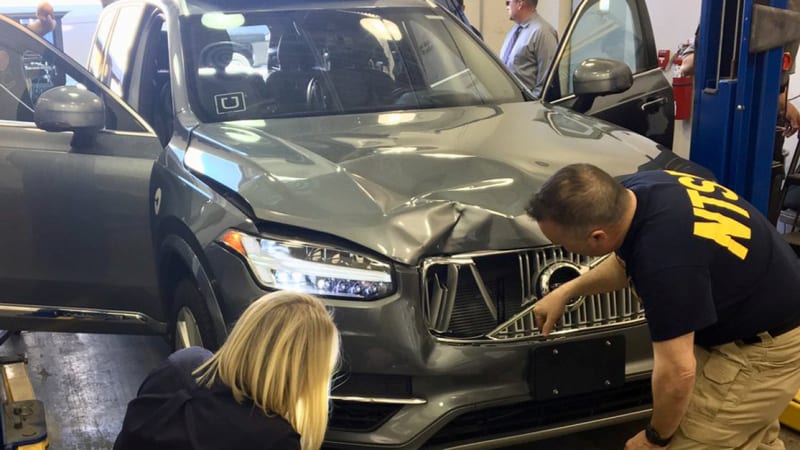This New App Is Like Shazam for Your Nature Photos
http://ift.tt/2pwxYjh

In July of 2016, thousands of people wandered out into streets and parks under the guidance of a hugely popular wildlife app. The app was Pokemon Go, and the wildlife did not, in any real sense, exist. Yet while Pokemon fans were attempting to collect fantastic—if ultimately digital—animals, some inevitably found real ones as well. The disconnect spawned quite a few jokes, mostly involving possums, and Ecologists and museum curators, sensing a learning opportunity, offered Pokemon Go-themed outreach events; Anna Turkett, a zoo keeper in Birmingham I went to school with, briefly gained internet fame for her pokemon-style animal signage.
However, if you wanted an app that would mimic Pokemon Go but for existing species, you were largely out of luck. That changed in early March, when social media site iNaturalist released SEEK, an IOS app for people who want to search out local flora and fauna. The new app is part of an ongoing attempt to tempt people into citizen science—and to get them to see the wonder in species they might otherwise ignore.
iNaturalist was co-founded in 2008 by Nate Agrin, Jessica Kline, and Ken-ichi Ueda as part of a Masters project at UC Berkeley. The goal was to create an online community for naturalists, ecologists, and nature-loving amateurs, where people could record and discuss their observations from the field, local park, or their own backyard—A hiker could submit a picture of a strange snake they saw on the trail or a biologist back from the field could unload sound recordings of birds collected in the deep jungles.
“It’s a community of people who are going to help each other explore the natural world, and from a scientific side, also vet data and make sure it’s correct,” Scott Laurie, the site’s co-director, told Earther.
While the social aspect of the site is paramount, Stakeholder Engagement Coordinator Carrie Seltzer told Earther acquiring data is an inevitable result of the site’s model: Having a bunch of users outside taking pictures is incredibly useful when it comes to crowdsourcing identifications, and recording localities, dates, and times—the kind of basic information that’s useful but time intensive to actually collect. Much of the data logged on the site is sent to the Global Biodiversity Information Facility, an international organisation that offers open-source biodiversity data to scientists or anyone else who wants to make use of it. (For conservation reasons, locality data around endangered or threatened species is automatically redacted.)
With around 150,000 species logged onto the site and a huge set of labeled images, Laurie said, they soon realized they could make use of the new generation of artificial intelligence neural networks. Over the summer of 2017, they began training an AI that could identify species by recognizing images, a useful complement to the crowdsourcing function of iNaturalist. Now when you post, Laurie said, you still have people chiming in, but the AI will also take a crack on it.
The first thing you see when you open SEEK is a friendly list of common-sense warnings: stay safe, don’t trespass, don’t eat anything you find in the wild, and don’t harass wildlife which might take exception to it. From there, you’re provided with a list of organisms keyed to your location, a set of empty badges, and an encouragement to get out exploring. When you find something that interests you—plant, fungus, insect or vertebrate—you take a picture and wait for the AI to spit out a match and tell you what you’ve collected, along with a summary of information from Wikipedia.
It’s a neat, intuitive little system, although the AI still has some hiccups. I spend a lot of time searching out animals for fun, so I initially plugged a couple of my photos from previous collecting trips into the app to see what it made of them. The app—which was keyed to my current location in Atlanta—correctly identified the slimy salamanders, pickerel frogs, and two-lined salamanders, netting me a tidy badge. It had a much harder time with a picture of a hefty indigo snake I found while reporting in the Lower Rio Grande Valley, though it eventually correctly suggested that it was some sort of colubrid snake.
But the app’s real value quickly became apparent when I took it out into my parent’s front yard. While the neighborhood is nestled in urban Dekalb County, it’s fairly green and can host deer, red foxes, coyotes, raptors, and the occasional turkey. Usually when I visit, I keep an eye out for those; I’ve rarely given much thought to the profusion of small plants that run wild under the big magnolia in our yard, which sprout from the foraging of the birds at our feeders. But by getting down and photographing various small leaves, I discovered that the yard is quite a bit more diverse than I thought—the app helped identify white clover, blue violets, greater periwinkle, black elderberry, common ivy, and the edible common chickweed.
The situation at a local park was equally interesting: The understory near the broad, slow creek is matted with Japanese honeysuckle, a handsome little vine that originated in East Asia, and with red dead-nettle, whose evocatively named flowers hail from greater Eurasia.
I’d had no notion that these non-native plant species were present in a park I’ve been visiting, off and on, since I was a small child. I’m used to being the walking guidebook with friends when out in nature, identifying reptiles and amphibians with ease. It was a delight to be made aware of just how much life is out there that I don’t know anything about.
The AI currently recognizes 30,000 species, according to Laurie, with the best coverage in North American locations where most people are using the site.
“Every hour we’re getting a new species into that pool, just because we’re getting more data coming from thousands of people that are using iNaturalist every day,” he said. “The only way we can improve our modeling of species is to get more data, and to do that we need more people outside taking pictures of their backyards and exploring.”
While SEEK doesn’t collect data or sightings off of people’s phones, anyone who wants to graduate to something more intensive can join iNauralist’s mobile app, which does. In the meantime, the team is really excited about the possibility that SEEK can introduce the habits involved with citizen science in a non-threatening way.
“It’s about teaching people about the lifestyle,” Laurie said. “People have a limited amount of bandwidth. Some people choose golf. Some people choose stamp collecting. And we’re trying to get people excited and engaged with being stewards of the natural world.”
Laurie said that while iNaturalist is a great tool, “it’s kind of preaching to the choir.” SEEK on the other hand, if a better way to get new people hooked.
“I think if we can build with young kids the kind of culture and lifestyle of being curious and interested, and of wanting to do the activities involved in citizen science, which is going outside and making observations—that’s a huge win,” he said.
Asher Elbein is a journalist and short fiction writer from Austin. His website is asherelbein.com and you can find him on Twitter @asher_elbein.
Games
via Kotaku http://kotaku.com
March 21, 2018 at 10:33AM






